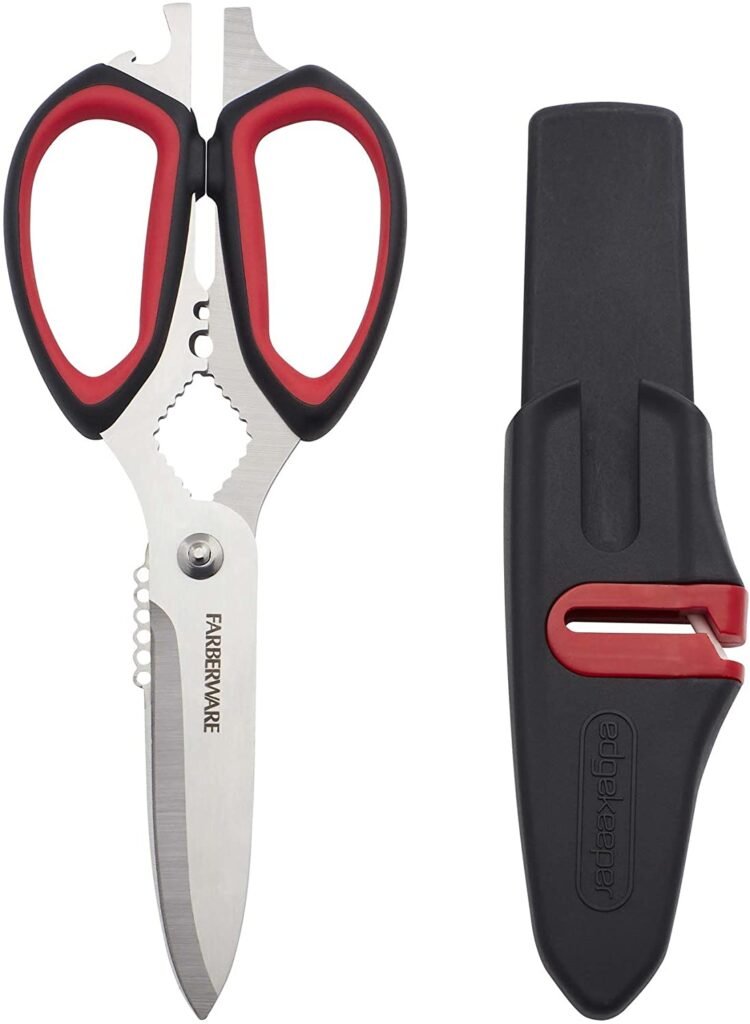Kitchen scissors undoubtedly are an underrated kitchen tool, yet everyone will realize the value and importance of kitchen scissors not just for kitchen-related tasks, but for other household chores too. Kitchen shears are essentially identical to regular scissors except that the fulcrum in a pair of shears is located further away from the handle to provide greater leverage and power. Useful for a variety of light butchering needs, a good pair of kitchen shears can cut cleanly through joints and smaller bones. Shears are also ideal for snipping fresh herbs as well as cutting cheesecloth, parchment paper, and butchers twine. Many shears feature accessories like can and bottle openers, but we do not believe that these extras give any pair of shears an advantage over a simple, solid pair of forged shears.
SHEARS VS. SCISSORS
While they both have two blades and handles, the basic design differences are in the shape and size of the handles, and the length of the blades. The handles on scissors will have equally sized and symmetrical handle loops, and their blade length is usually 6” or less.
Shears will usually have blades 6” and longer, with the bottom handle being larger and more oblong in shape – except kitchen snips, which have shorter blades of 4-5” to provide extra leverage and force when needed.
Things to Consider
BLADE: The blades of the best kitchen shears are forged from high-carbon stainless steel. High-carbon stainless steel sharpens easily, takes and retains a sharp edge for long periods of time, and does not rust, pit, or react with acidic food. A solid pair of forged shears will last you a lifetime.
HANDLE: Although the handles of the best kitchen shears are forged from the same piece of high-carbon stainless steel blanks as the blades, many shears featuring rugged modern plastic handles permanently bonded to stainless steel blades are sufficiently durable for regular everyday kitchen use. In our opinion, the construction of a pair of shears is not nearly as important as whether or not the shears can be taken apart. Shears with handles that are permanently fastened together can harbor dangerous bacteria and should never be used for butchering.
SHARPNESS: Better-quality shears have blades of high-carbon stainless steel that stay sharp or can be sharpened with a whetstone. Also, consider blades with serrations for better gripping onto slippery food
SKREW: A good quality pair of kitchen shears will cut well for you if the tension is correct and comfortable. If the tension is too tight, it’ll hurt your hands to use the shears. If the tension is too loose, it’ll feel wobbly and unsafe, especially on a difficult food to cut. To avoid this issue, opt for a pair with a screw or a bolt between the blades that adjusts the tension.
COMFORT: Models that have a rubber or synthetic grip will usually be more comfortable when cutting through tough materials, and they also reduce slipping when your hands are wet.
HANDLE: Select a pair of cutters that will be the most appropriate for your hand size and shape, and that will allow for a roomy grip.
Maintain Kitchen Scissors
Clean Immediately – Ensure you clean the kitchen scissors immediately after using them with hot water and some dish soap. The longer you allow the food contents to stick to the scissors, the more difficult it will get to clean them later.
Oil Regularly – You can apply some amount of food-grade mineral oil to ensure the blade moves smoothly and functions effectively.
ORKK TOP SUGGESTIONS :
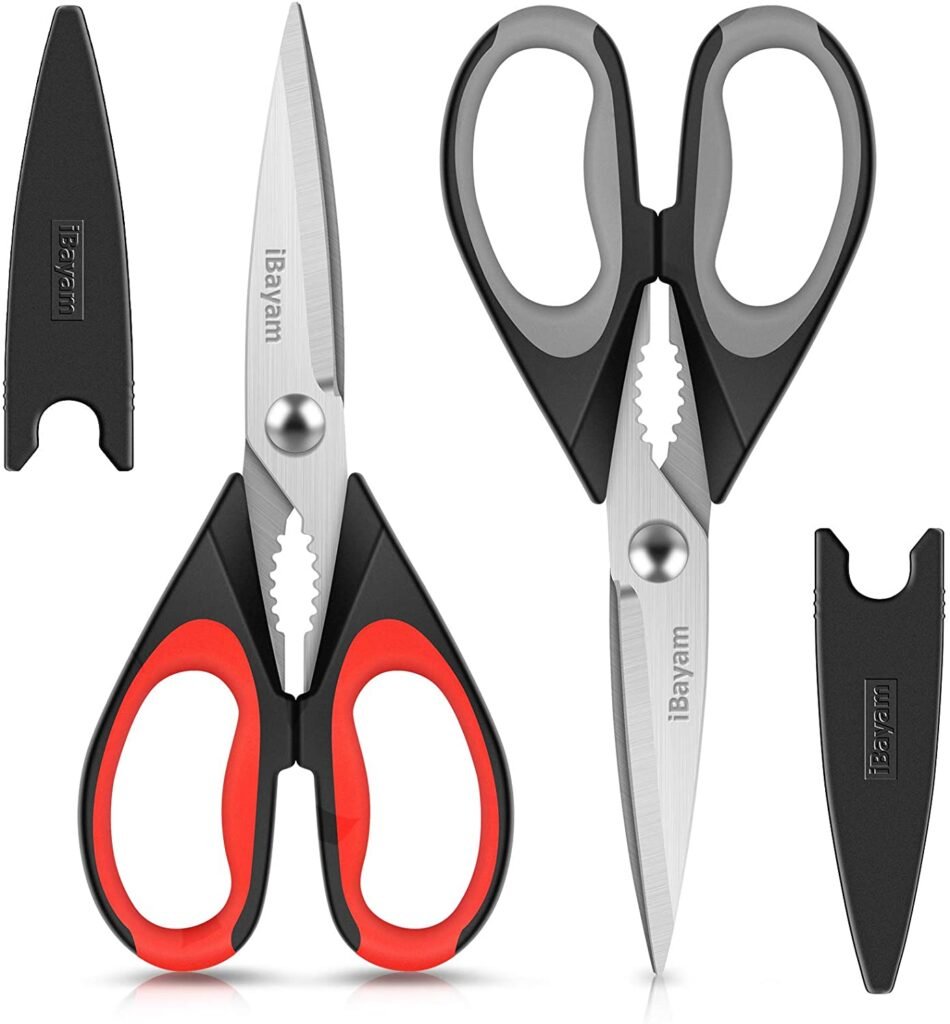
Kitchen Shears, iBayam 2-Pack Kitchen Scissors Heavy Duty Meat Scissors, Dishwasher Safe
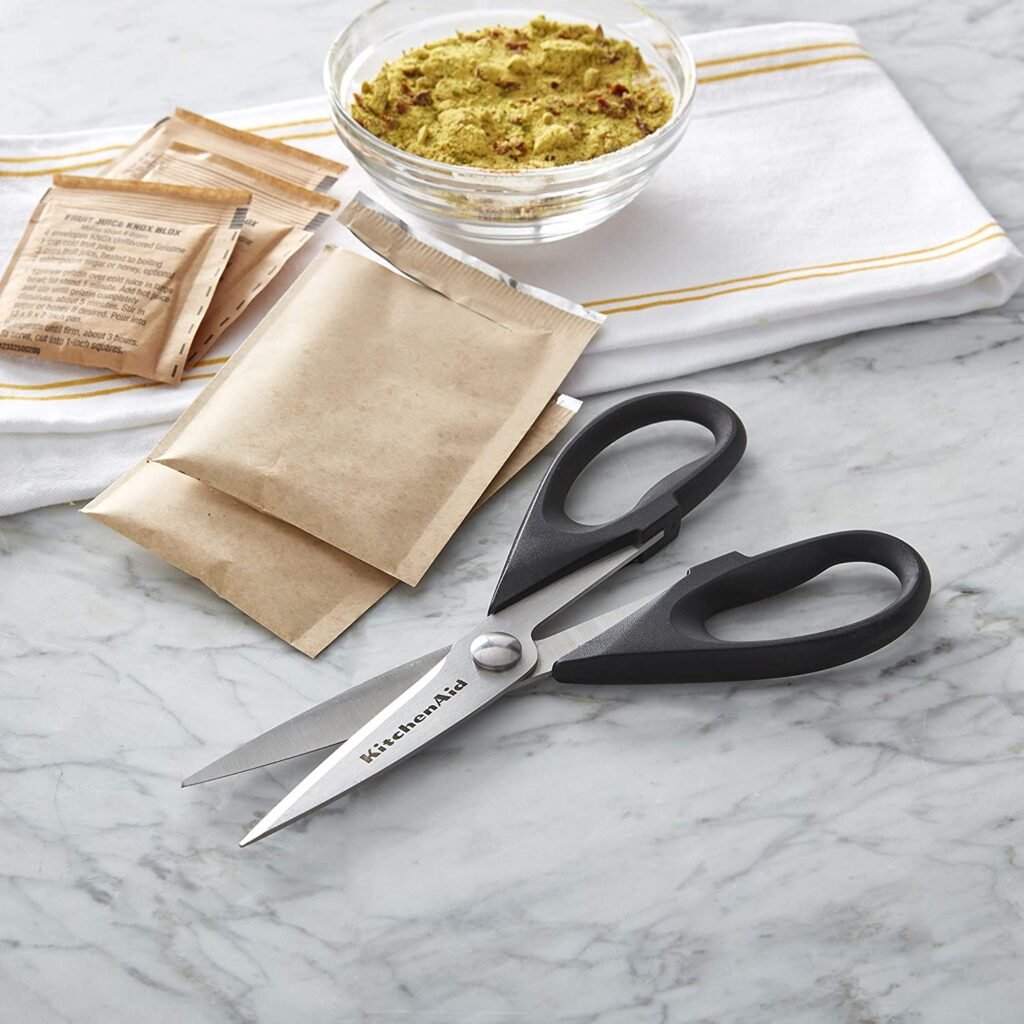
KitchenAid All Purpose Shears with Protective Sheath, 8.72-Inch, Black
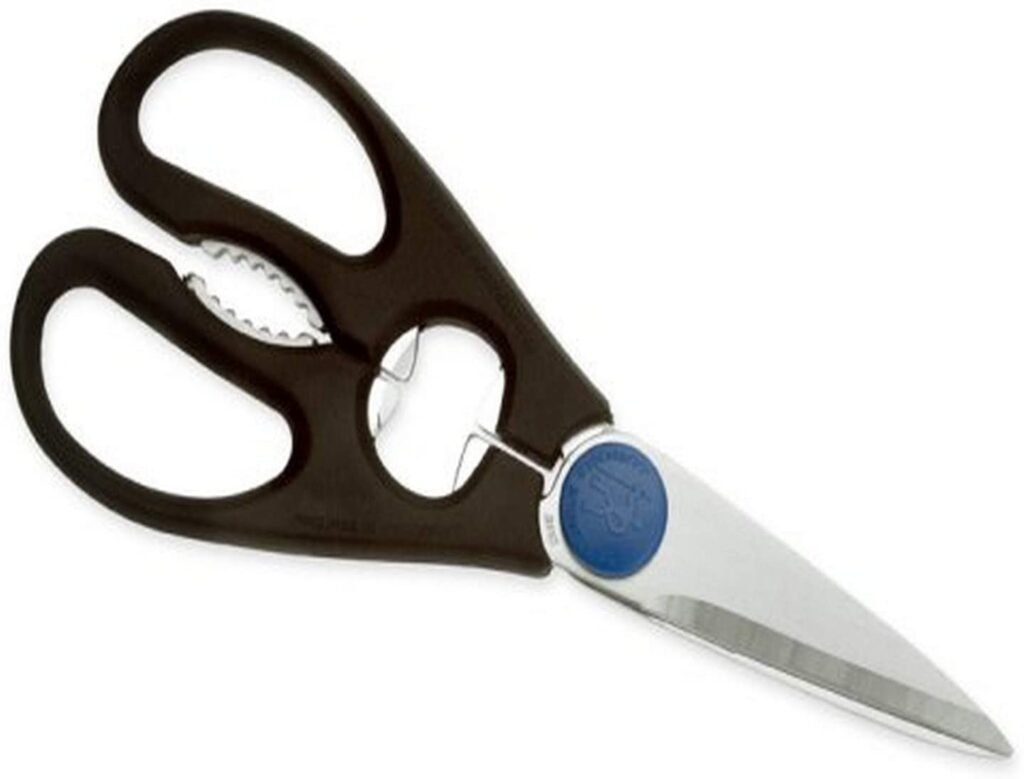
J.A. Henckels International Kitchen Shears
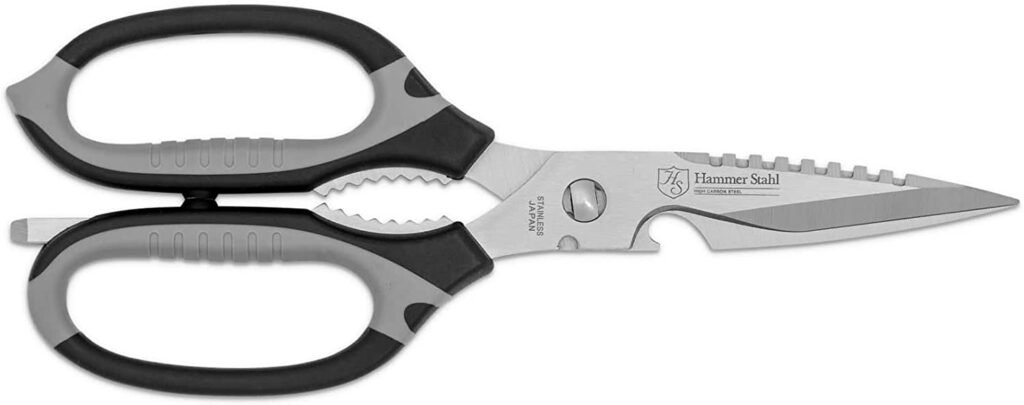
Hammer Stahl Kitchen Shears – Multipurpose Heavy Duty Kitchen Scissors – High Carbon Steel – Come-Apart Professional Cutter

Kitchen Shears, Acelone Premium Heavy Duty Shears Ultra Sharp Stainless Steel Multi-function Kitchen Scissors
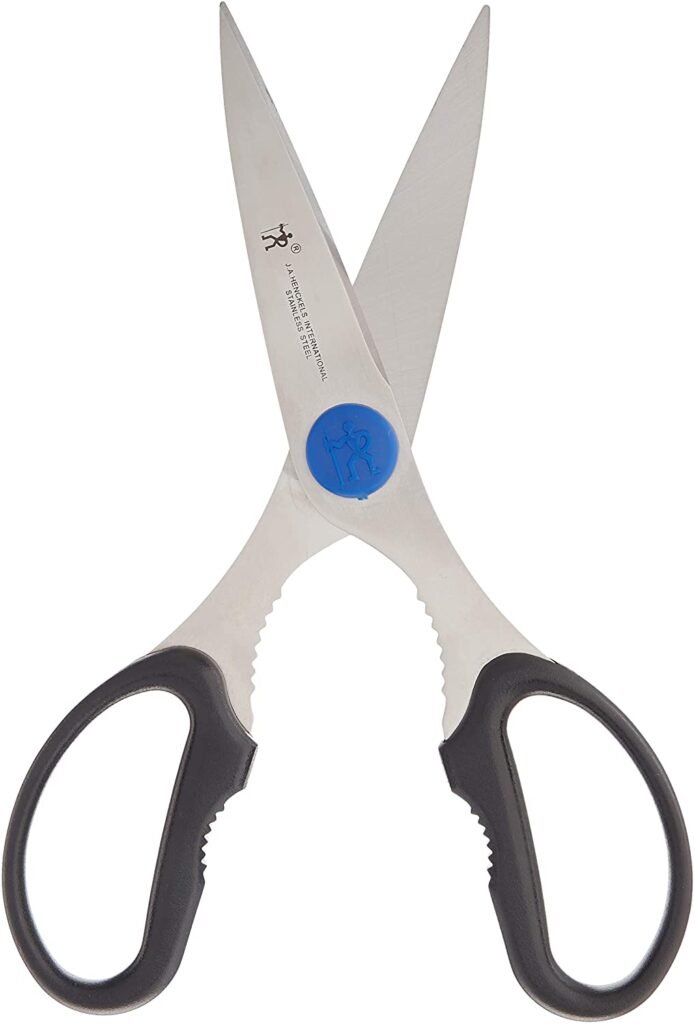
J.A. Henckels International Heavy Duty Kitchen Shears that Come Apart, Dishwasher Safe
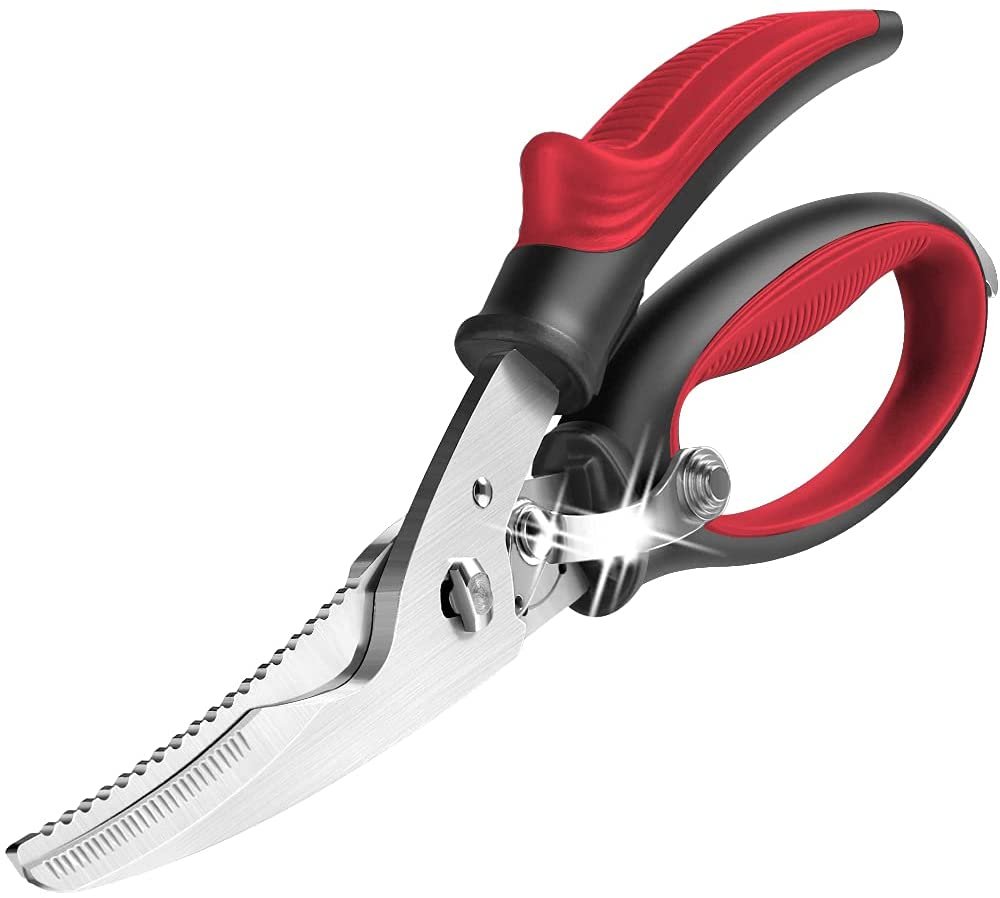
SZFIXEZ Poultry Shears Kitchen Scissors Heavy Duty Kitchen Shears Come Apart Meat Scissors Spring Loaded
